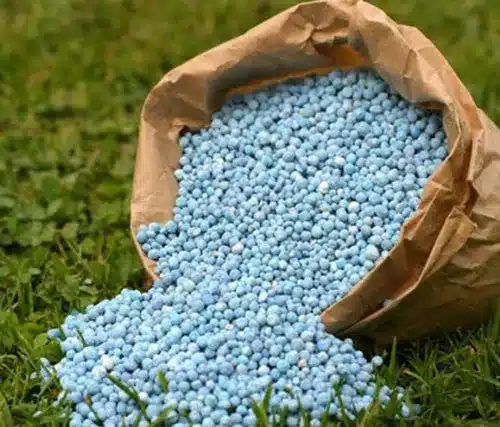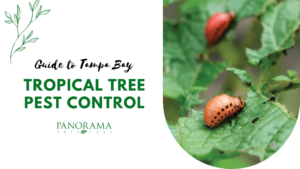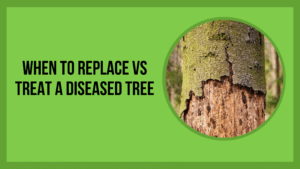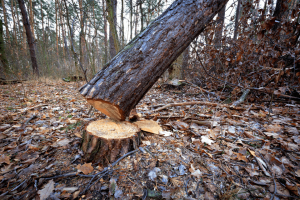Trees are the backbone of any landscape, offering shade, beauty, and clean air. But keeping them healthy requires more than just water and sunlight. Fertilization plays a crucial role in ensuring trees grow strong and thrive year-round.
When it comes to fertilizers, the choice often boils down to liquid and granular options. Let’s explore their differences and help you choose the best one for your trees.
Types of Tree Fertilizers
When it comes to fertilizers, there are two main types: liquid and granular. Both serve the same purpose—feeding the tree—but their application and effects differ. Understanding these differences will help you make an informed decision.
Liquid Tree Fertilizers
Liquid tree fertilizers are nutrient-rich solutions designed to deliver essential minerals directly to a tree’s roots or foliage. These fertilizers are mixed with water and applied either to the soil or sprayed onto the leaves.
They are a popular choice for quick and effective feeding, especially when a tree is in immediate need of nutrients.
Benefits of Liquid Fertilizers
One of the primary advantages of liquid fertilizers is their fast-acting nature. When applied, the nutrients dissolve in water and are readily absorbed by the roots or leaves. This makes liquid fertilizers ideal for trees that are under stress, suffering from nutrient deficiencies, or newly transplanted.
Their ability to provide an instant nutrient boost helps trees recover quickly and encourages healthy growth.
Liquid fertilizers also ensure uniform distribution of nutrients. When sprayed, they cover the soil or foliage evenly, reducing the chances of over-fertilizing specific areas. Additionally, liquid fertilizers can be tailored to meet specific nutrient requirements.
For instance, if a tree is lacking nitrogen or potassium, a custom mix can be prepared to address that need.
Drawbacks of Liquid Fertilizers
Despite their benefits, liquid fertilizers have some limitations. Their fast-acting properties mean they are short-lived, requiring more frequent applications compared to granular fertilizers. This can make them less convenient for homeowners or gardeners seeking a low-maintenance solution.
Another concern is the risk of nutrient runoff. If over-applied or improperly watered, excess liquid fertilizer can wash away into nearby water sources, potentially causing environmental harm. This is particularly problematic in areas with heavy rainfall or sloped landscapes.
Best Use Cases for Liquid Fertilizers
Liquid fertilizers are particularly effective in specific scenarios. Young trees, for example, benefit from the immediate availability of nutrients as they establish their roots.
Similarly, trees recovering from disease, pest infestations, or physical damage can use the quick boost provided by liquid fertilizers to regain their strength.
These fertilizers are also useful in professional settings where precise nutrient management is required. Arborists often use liquid fertilizers during root feeding or foliar feeding to ensure trees receive exactly what they need without overburdening the soil.
Application Tips
When using liquid fertilizers, it’s important to follow the manufacturer’s instructions for dilution and application rates. Applying too much fertilizer can lead to nutrient burns, harming the tree rather than helping it.
Distribute the solution evenly around the tree’s drip line—the area under the outermost branches where roots actively absorb nutrients. For foliar feeding, make sure to spray during the early morning or late evening to avoid leaf scorch from the sun.
Overall, liquid tree fertilizers are a powerful tool for promoting rapid growth and recovery. When used correctly, they provide trees with the nutrients they need to thrive, especially during critical growth stages or periods of stress.
Granular Tree Fertilizers
Granular tree fertilizers are solid, nutrient-packed pellets or granules that provide a slow and steady release of nutrients to the soil. Unlike liquid fertilizers, which act quickly but fade fast, granular fertilizers are designed for long-term feeding.
They are widely used for established trees and landscapes that require consistent nutrient support over time.
Benefits of Granular Fertilizers
One of the standout advantages of granular fertilizers is their longevity. These fertilizers break down slowly, releasing nutrients gradually as they dissolve in moisture or are broken down by microbial activity in the soil.
This slow-release mechanism ensures that trees receive a steady supply of nutrients for weeks or even months, reducing the frequency of reapplication.
Granular fertilizers are also easier to handle and store compared to their liquid counterparts. Since they are not prone to spilling or leaking, they are more convenient for homeowners and landscapers.
Additionally, they are less likely to cause nutrient runoff, making them an environmentally friendly choice when applied correctly.
Another key benefit is their ability to improve overall soil health. Many granular fertilizers are formulated with additives such as organic matter, which can enhance soil structure, water retention, and microbial activity. This dual action nourishes the tree while promoting a healthier soil ecosystem.
Drawbacks of Granular Fertilizers
While granular fertilizers are highly effective, they do have some limitations. The slow-release nature means that trees may not see immediate benefits, making them less ideal for situations where a quick nutrient boost is required.
This delayed effect can be problematic for young trees or those recovering from stress, as they may need nutrients sooner than granular fertilizers can provide.
Another drawback is the potential for uneven application. If granules are not distributed evenly around the tree’s base, some roots may receive more nutrients than others, leading to imbalanced growth. This issue can be mitigated with proper application techniques, but it requires careful attention.
Additionally, granular fertilizers need to be watered in to activate their nutrients. If left dry, the granules may sit on the soil surface without delivering their intended benefits. This extra step can be inconvenient for some users, especially in areas with limited rainfall.
Best Use Cases for Granular Fertilizers
Granular fertilizers are best suited for established trees with well-developed root systems. Their slow-release nature provides consistent feeding, which is ideal for maintaining tree health and preventing nutrient deficiencies over the long term.
They are particularly effective in preventative care, helping trees build resilience against pests, diseases, and environmental stress.
These fertilizers are also an excellent choice for homeowners or property managers who prefer a low-maintenance approach to tree care.
Since granular fertilizers require less frequent application than liquid options, they are perfect for busy individuals looking to sustain healthy landscapes with minimal effort.
Application Tips
Applying granular fertilizers requires a thoughtful approach to ensure even distribution and proper absorption. The best method is to scatter the granules evenly around the tree’s drip line—the area under the outer edges of the canopy where roots actively absorb nutrients.
Keep the granules a few inches away from the trunk to prevent over-concentration near the base, which can harm the tree.
After spreading the fertilizer, water the area thoroughly to help the granules dissolve and seep into the soil. If rainfall is expected, you can let nature do the watering for you.
For established trees, applying granular fertilizer once or twice a year—typically in early spring and late fall—is sufficient to keep them healthy and vibrant.
Liquid vs. Granular: A Side-by-Side Comparison
| Feature | Liquid Fertilizers | Granular Fertilizers |
|---|
| Form | Liquid solution | Solid pellets or granules |
| Absorption Speed | Fast-acting; nutrients are quickly absorbed by roots and foliage | Slow-release; nutrients are absorbed gradually as the granules break down |
| Duration of Effect | Short-term; requires more frequent applications | Long-lasting; can feed trees for weeks or months |
| Application Method | Sprayed or poured around the drip line; can also be used for foliar feeding | Scattered around the base of the tree and watered in |
| Ease of Application | Easy to mix and apply, but may require special equipment (e.g., sprayers) | Simple to spread, though it requires even distribution and activation with water |
| Best Use Cases | Ideal for young, newly planted, or stressed trees; provides an immediate nutrient boost | Best for established trees or preventative care; supports long-term health |
| Risk of Over-Application | Higher risk; excess liquid fertilizer can lead to runoff and nutrient waste | Lower risk; granules stay in place and dissolve gradually |
| Environmental Impact | Potential for nutrient runoff into nearby water systems if improperly applied | Minimal runoff risk when used correctly; nutrients are released directly into the soil |
| Cost Efficiency | Can be costlier in the long run due to frequent applications | More cost-effective as one application lasts longer |
| Storage and Handling | Requires careful storage to prevent spills or leaks; can be bulky when storing large quantities | Compact and easy to store; no risk of leakage |
| Seasonal Suitability | Effective for rapid feeding in spring or during active growth phases | Suitable for seasonal feeding, especially in early spring and fall |
| Impact on Soil Health | Immediate nutrient delivery but may not contribute to long-term soil enrichment | Often includes organic components that improve soil structure and microbial activity |
| Risk of Root Damage | Can cause root burns if over-applied or improperly diluted | Minimal risk of damage when applied according to instructions |
| Customization | Can be tailored with specific nutrients for a tree’s unique needs | Limited customization; usually provides a balanced mix of essential nutrients |
| Maintenance Requirements | Requires regular reapplication, particularly during growing seasons | Low-maintenance; needs less frequent reapplication |
When to Fertilize Your Trees
Timing is everything when it comes to fertilization. For most trees, early spring and late fall are the best times. Spring fertilization supports new growth, while fall fertilization helps the tree prepare for winter dormancy.
If you notice signs of nutrient deficiency—such as pale leaves, slow growth, or poor flowering—fertilizing mid-season may be necessary.
Why Choose Panorama Tree Service for Fertilization Needs
Caring for your trees isn’t just about applying fertilizer; it’s about understanding what your trees need to thrive. At Panorama Tree Service, we combine expertise, high-quality products, and a deep commitment to tree health to ensure your trees receive the best care possible.
Here’s why choosing Panorama Tree Service for your fertilization needs is the best decision for your landscape.
1. Customized Fertilization Plans
Every tree is unique, with its own nutritional requirements depending on its species, age, health, and location. Our team of professional arborists assesses your trees and soil conditions to create a tailored fertilization plan.
Whether your trees need a quick nutrient boost with liquid fertilizers or long-term care with granular options, we’ve got you covered.
Learn more about our Root Tree Fertilization Service to see how we provide nutrient-rich solutions directly to your tree’s root system for optimal absorption.
2. Expertise in Diagnosing Nutritional Deficiencies
It’s not always easy to spot when a tree is lacking essential nutrients. Yellowing leaves, stunted growth, and sparse foliage are just a few signs of nutrient deficiencies. Our trained arborists can accurately diagnose these issues and recommend the best fertilization methods.
This ensures that your trees receive the right nutrients in the right amounts, avoiding the risks of over-fertilization or under-fertilization.
Need help with stressed or underperforming trees? Explore our Tree Trimming Services to complement your fertilization efforts with professional pruning for better growth and appearance.
3. Sustainable and Eco-Friendly Practices
At Panorama Tree Service, we prioritize sustainability. Our fertilization methods are designed to enrich your trees without harming the environment. We use eco-friendly fertilizers and techniques that minimize nutrient runoff and protect nearby water systems.
Our focus on sustainability helps you maintain a healthy, green landscape while being mindful of your environmental impact.
If you’re looking to preserve your entire landscape ecosystem, consider our Tree Root Barrier Installation services to prevent root overgrowth and maintain a harmonious garden.
4. Comprehensive Tree Care Services
Fertilization is just one part of a comprehensive tree care plan. Panorama Tree Service offers a full suite of services to ensure your trees remain healthy, vibrant, and structurally sound.
From Tree Removal Services for dead or dangerous trees to Stump Removal Services for a clean and polished landscape, we are your one-stop solution for all things tree-related.
5. Professional Arborists You Can Trust
Our team consists of certified arborists with years of experience in tree care and fertilization. We stay up-to-date with the latest industry techniques and best practices, ensuring your trees receive care that meets the highest standards.
With Panorama Tree Service, you can rest assured that your trees are in skilled and capable hands.
6. Convenient and Hassle-Free Service
We understand that managing your landscape can be time-consuming. That’s why we take care of everything—from assessing your trees and selecting the best fertilizers to applying them with precision and care.
We aim to make tree care simple and stress-free so that you can enjoy a beautiful and healthy landscape without the extra effort.
7. Long-Term Commitment to Tree Health
At Panorama Tree Service, our goal is to not only nourish your trees but also educate you about their care. We provide advice and guidance to help you maintain your trees between fertilization sessions.
Our commitment to long-term health ensures your trees grow stronger, resist pests and diseases, and remain an asset to your property for years to come.
For decorative and artistic tree shaping, check out our Topiary Services, which pair beautifully with a robust fertilization plan.
The Panorama Tree Service Difference
Choosing the right fertilizer is important, but knowing how and when to apply it can make all the difference. At Panorama Tree Service, we bring expertise, care, and dedication to every project.
Whether your tree needs a quick nutrient boost or ongoing care, we’ll ensure it stays healthy, strong, and beautiful.
Contact us today to schedule a consultation or learn more about our tree fertilization and related services. Let Panorama Tree Service help you nurture your trees and maintain a thriving, vibrant landscape!
Final Thoughts
Choosing between liquid and granular fertilizers doesn’t have to be a tough decision. It all comes down to your tree’s needs, your goals, and the environment. With the right fertilizer and proper application, your trees will reward you with years of beauty and shade.
For expert guidance and services, reach out to Panorama Tree Service. Let us help you grow a healthier landscape, one tree at a time!









